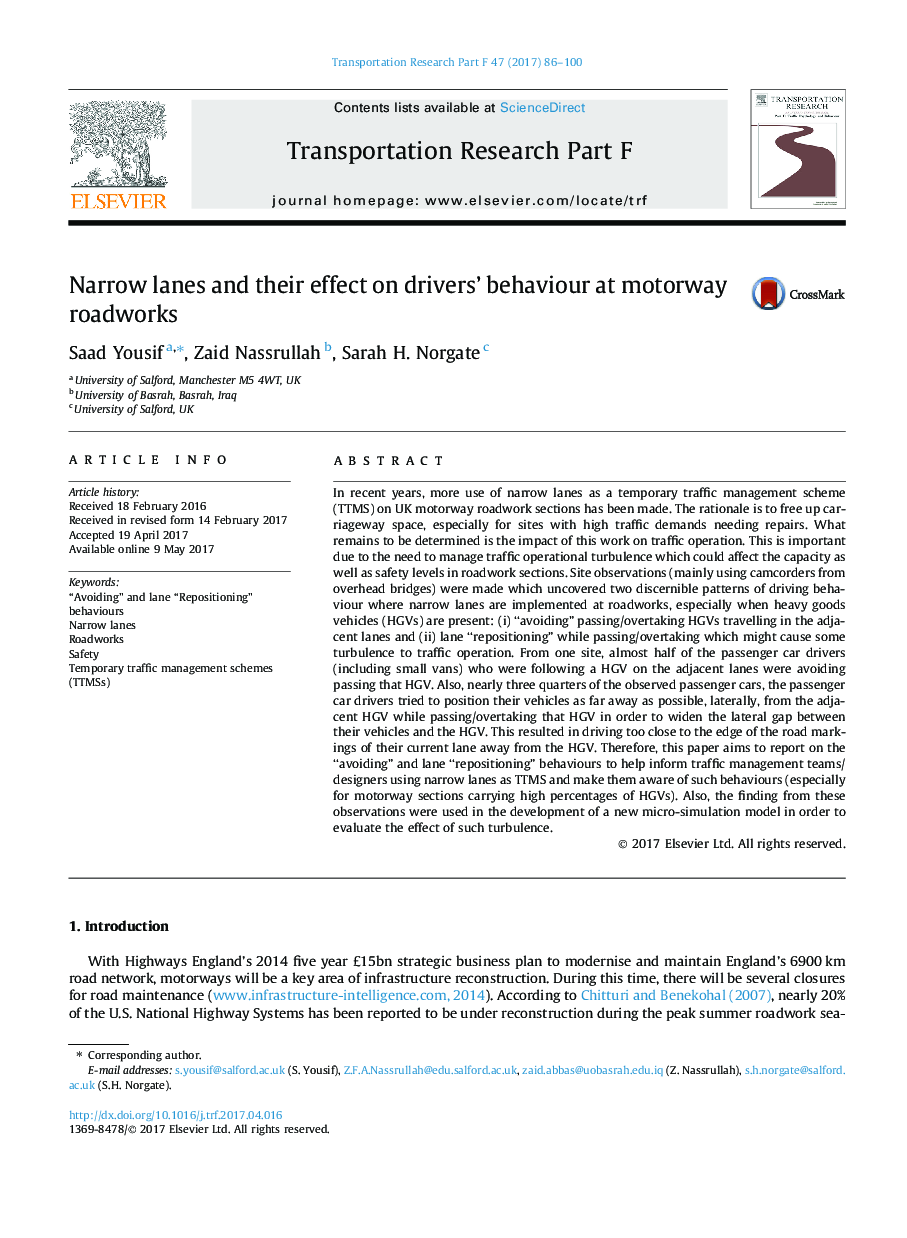| کد مقاله | کد نشریه | سال انتشار | مقاله انگلیسی | نسخه تمام متن |
|---|---|---|---|---|
| 5037301 | 1472439 | 2017 | 15 صفحه PDF | دانلود رایگان |
- This paper highlighted the effects of using narrow lanes at roadwork sites on drivers behaviour.
- The effect of Heavy Goods Vehicles on “lane repositioning” and “avoiding” behaviours was investigated.
- Using narrow lanes should always be accompanied with reduced speed limits.
- The use of narrow lanes at roadworks sites with high percentages of HGVs was not recommended.
In recent years, more use of narrow lanes as a temporary traffic management scheme (TTMS) on UK motorway roadwork sections has been made. The rationale is to free up carriageway space, especially for sites with high traffic demands needing repairs. What remains to be determined is the impact of this work on traffic operation. This is important due to the need to manage traffic operational turbulence which could affect the capacity as well as safety levels in roadwork sections. Site observations (mainly using camcorders from overhead bridges) were made which uncovered two discernible patterns of driving behaviour where narrow lanes are implemented at roadworks, especially when heavy goods vehicles (HGVs) are present: (i) “avoiding” passing/overtaking HGVs travelling in the adjacent lanes and (ii) lane “repositioning” while passing/overtaking which might cause some turbulence to traffic operation. From one site, almost half of the passenger car drivers (including small vans) who were following a HGV on the adjacent lanes were avoiding passing that HGV. Also, nearly three quarters of the observed passenger cars, the passenger car drivers tried to position their vehicles as far away as possible, laterally, from the adjacent HGV while passing/overtaking that HGV in order to widen the lateral gap between their vehicles and the HGV. This resulted in driving too close to the edge of the road markings of their current lane away from the HGV. Therefore, this paper aims to report on the “avoiding” and lane “repositioning” behaviours to help inform traffic management teams/designers using narrow lanes as TTMS and make them aware of such behaviours (especially for motorway sections carrying high percentages of HGVs). Also, the finding from these observations were used in the development of a new micro-simulation model in order to evaluate the effect of such turbulence.
Journal: Transportation Research Part F: Traffic Psychology and Behaviour - Volume 47, May 2017, Pages 86-100
